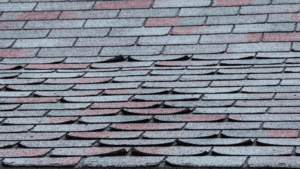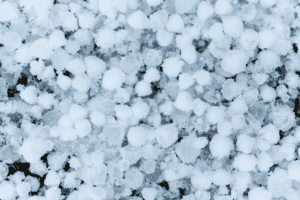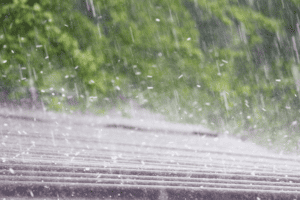Learn How to Identify Roof Damage from Wind—and What You Can Do About It
Though often less obvious than hail, roof damage from sustained high wind speeds or sudden gusts can be every bit as severe. In extreme cases, high winds can fully tear off roofing materials, leaving your home exposed. But even less obvious damage can weaken your roof, leaving it vulnerable to further damage, or disrupt your roof’s overall performance.
Roof damage from wind is a problem that all homeowners should know how to identify, and homeowners must also know what types of wind can damage their roof—as well as what steps to take following a wind storm. That’s why the trusted roofing experts at Elite Roofing & Solar have put together this complete guide to wind damage. Let’s get started!
Signs of Roof Damage from Wind
Some signs of roof damage from wind are obvious, while others are more subtle. The most common signs of roof damage include loose or missing shingles, curled shingles, granule loss, divots or dents, and damaged flashing. It’s important to know a variety of signs to look for to more accurately assess the condition of your roof.
Loose or Missing Shingles
Perhaps the most clear-cut sign of roof damage from wind, loose or missing shingles are common as high winds pull at your roof’s shingles and may even tear them off entirely. Missing shingles are easy to spot. To identify loose shingles, look for shingles that appear misaligned or crooked.
Curled Shingles
Wind can also damage the shingles themselves without removing or loosening them. Curled shingles are a common result of high winds. While seemingly minor, curled shingles leave the underlying portion of your roof more exposed to the elements, particularly moisture.
Granule Loss
While difficult to identify on your roof itself, granule loss is essentially erosion of the outer, protective layer of your roof’s asphalt shingles. Look for excessive asphalt granules in your gutters, near downspouts, or around your roof line.
Divots or Dents
Dents are commonly associated with hail damage, but high winds can dent your roof as well. This is because gusts or sustained high winds can kick up debris and fling them against your home, including your roof.
Damaged Flashing or Siding
Since we don’t recommend climbing onto your roof, it may be difficult to identify some of the above signs of damage from the ground. However, you can also use other parts of your home as evidence that you’ve sustained roof damage from wind. If your home’s siding or flashing shows signs of wind damage, chances are your roof did not escape unscathed.
How Fast Does Wind Need to Be to Damage a Roof?
Wind speeds from 50–60 mph can begin to cause damage, but typically major roof damage will not occur until wind speeds approach 70–90 mph. Here’s what may happen to your roof at various wind speeds:
- 50–60 mph – Winds can begin causing damage, most often by knocking down tree limbs that impact your home.
- 60–70 mph – Winds may loosen or tear off shingles, especially shingles that were already loose. Debris damage more likely.
- 70–90 mph – Severe roof wind damage is likely. Large branches or even older trees may be knocked down.
Does Homeowners Insurance Cover Wind Damage?
Most homeowners insurance policies cover wind damage to your home, as this is a common source of storm damage. However, every policy and provider is different with how they approach coverage from specific types of damage.
If you live in an area susceptible to high winds, or if you’re simply unsure of your coverage for wind, hail, fire, and other types of damage, it’s best to ask your provider directly for more information.
What To Do If Wind Has Damaged Your Roof
As with most types of storm damage, it’s important to act quickly if you think your roof may have been affected by high winds. Leaving any type of roof damage unaddressed is never a good idea, as a compromised roof leaves your home vulnerable to moisture intrusion, structural damage, and many other unpleasant things.
The first step should be to call a trusted roofing expert to schedule a roof inspection for wind damage. A trained professional will be able to identify and diagnose any type of wind damage on your roof. They’ll be able to determine the extent of the damage, make recommendations for repairs, and even help you decide whether filing an insurance claim is necessary.*
Call Elite Roofing Today to Schedule Your Inspection!
Elite Roofing & Solar is the go-to expert for all forms of storm damage, including from major wind storms. Our team has years of experience completing thorough storm damage inspections and completing repairs and replacements to fully restore your home’s roofing system. As a family-owned business, our aim is to protect you and all of your loved ones—including your people, your plants, and your pets.
If you’ve been affected by roof wind damage, contact us today to schedule an inspection!









